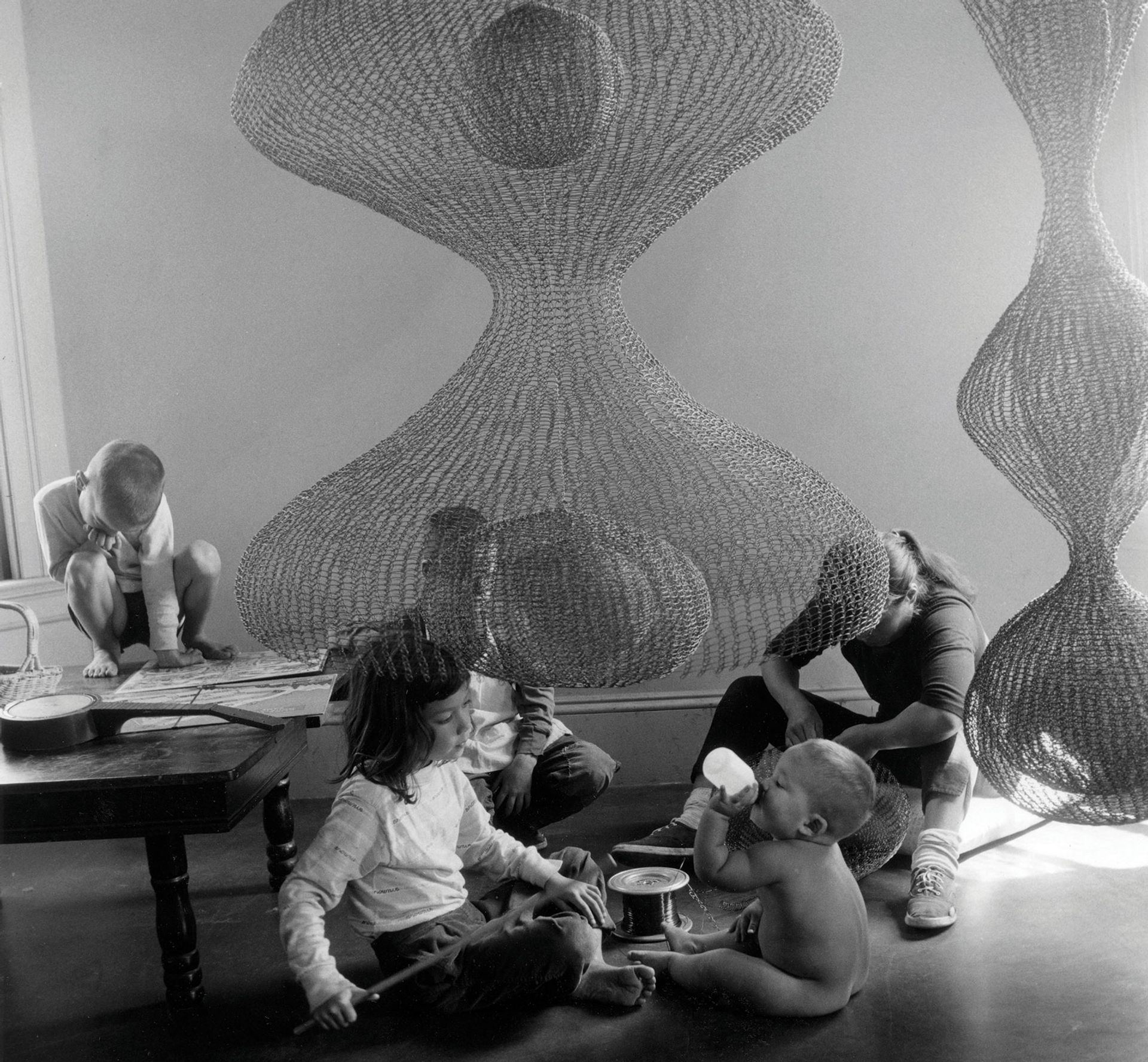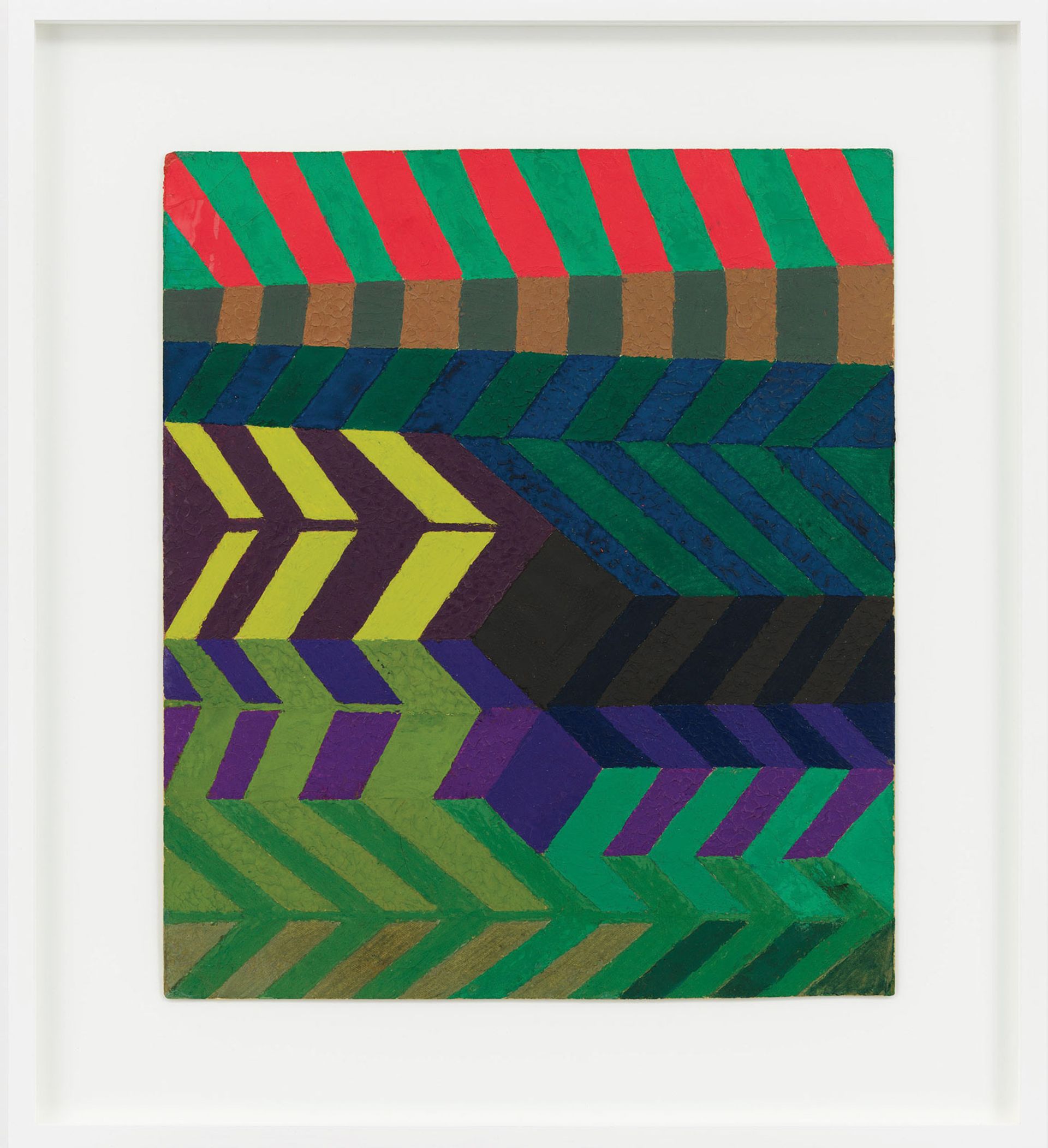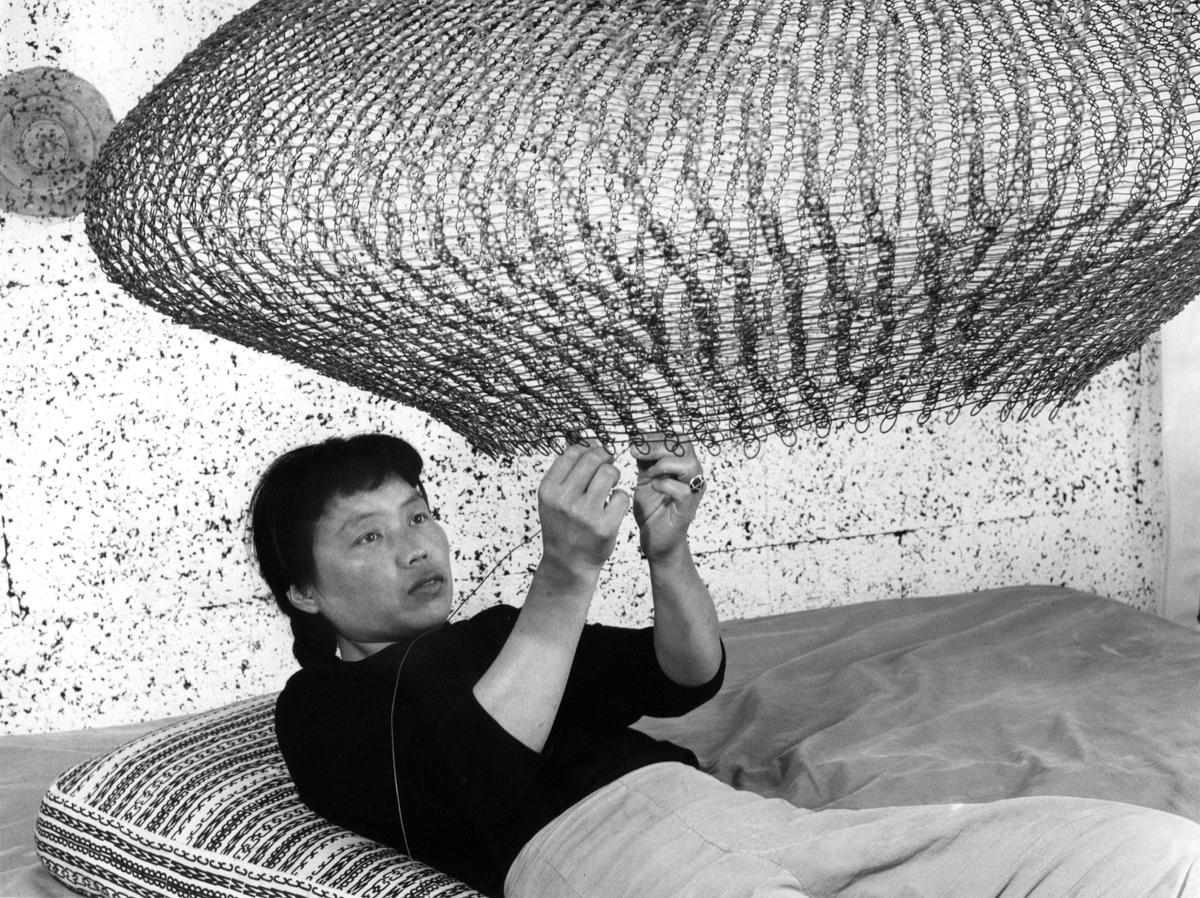In a 1957 photograph by Imogen Cunningham, a baby drinks from a bottle of milk and children play, while their mother, the artist Ruth Asawa, studiously works on one of her sinuous wire sculptures. The image reveals how deeply life and art were entwined for the San Francisco-based artist, who made her studio in the family home where she raised six children. “Art deals directly with life,” she said, and the study of it means “learning basic principles essential to staying alive”.
Asawa’s lifelong commitment to art—both as an artist and a passionate advocate for art’s role in education and society at large—is the “key” that runs through Ruth Asawa: Citizen of the Universe, the first institutional solo show dedicated to her work in Europe, says its co-curator Emma Ridgway. The exhibition opens this week at Modern Art Oxford and will travel in October to the Stavanger Art Museum in Norway.

Imogen Cunningham’s 1957 photograph of Ruth Asawa at work on one of her wire sculptures, surrounded by four of her six children © 2022 Imogen Cunningham Trust
Asawa was born in 1926 to Japanese immigrant parents in rural California and grew up on the family farm during the Great Depression. Aged 16, she was among 120,000 Japanese Americans to be interned by the US government following Japan’s attack on Pearl Harbour. It was then that she first experienced the power of art education, studying drawing with Walt Disney animators who were held in the same camp. She aspired to become a teacher herself, only to be told after three years of training that she could not complete the course due to her Japanese background.
I now want to wrap fingers cut by aluminium shavings [...] Only these things produce tolerable painsRuth Asawa
In 1946 she joined the legendary liberal arts school Black Mountain College, emerging as a “stellar student”, Ridgway says. There began her experiments with looped wire, informed by the basket-weaving craft she encountered during a trip to Mexico. Her signature technique channelled the creative principles she had learned from her college mentors, Josef Albers and Buckminster Fuller, of understanding negative space, fashioning self-supporting structures and making the most with the least.

Asawa’s Continuous (S.340, Hanging, Miniature Single-Lobed, Three Layered Continuous Form within a Form) (1981-82) Photo: Dan Bradica; © 2021 Ruth Asawa, Lanier, Inc./ARS, NY and DACS
Asawa’s ethereal, interlocking wire forms of the 1950s and 60s will be the centrepiece of the Modern Art Oxford show, suspended in the darkened main gallery and illuminated by spotlights—a display technique the artist used herself. “Those works are made to be experienced physically as you move through the space,” Ridgway says.
Despite their imposing size, the sculptures are “exceedingly delicate”. This fragility means bringing Asawa’s work to Europe has been “pretty complicated”, Ridgway says, given the “logistics of the care needed in every aspect of the shipping” and the associated costs. Although she had early success in the New York art world, Asawa was “partly deterred” by the practical challenges of shipping works further afield during her career, preferring to stay local to San Francisco.

Ruth Asawa's Untitled (BMC.92, In and Out) (around 1948-49) Photo: Dan Bradica. Artwork © 2021 Ruth Asawa Lanier, Inc. / ARS, NY and DACS, London. Courtesy David Zwirner
The show will also highlight lesser-known aspects of her work, such as the abstract colour paintings she made at Black Mountain College, sensitive observational drawings from nature, and tied wire sculptures inspired by desert plants. A room of archival material will offer “a more intimate look” at her life, including photographs of her home and the artist-led workshops she established in San Francisco public schools, as well as personal letters.
Here will be a copy of the 1948 love letter from which the exhibition takes its title. Writing to her future husband Albert Lanier, Asawa described how she had “overcome most of the fear” of racial intolerance and became a “citizen of the universe”, transcending the labels of Japanese or American. Heralding the uncompromising path she would later forge as a working artist, mother and dedicated community activist, she wrote: “I no longer want to nurse such wounds, I now want to wrap fingers cut by aluminium shavings, and hands scratched by wire. Only these things produce tolerable pains.”
• Ruth Asawa: Citizen of the Universe, Modern Art Oxford, 28 May-21 August; Stavanger Art Museum, 1 October-22 January 2023


